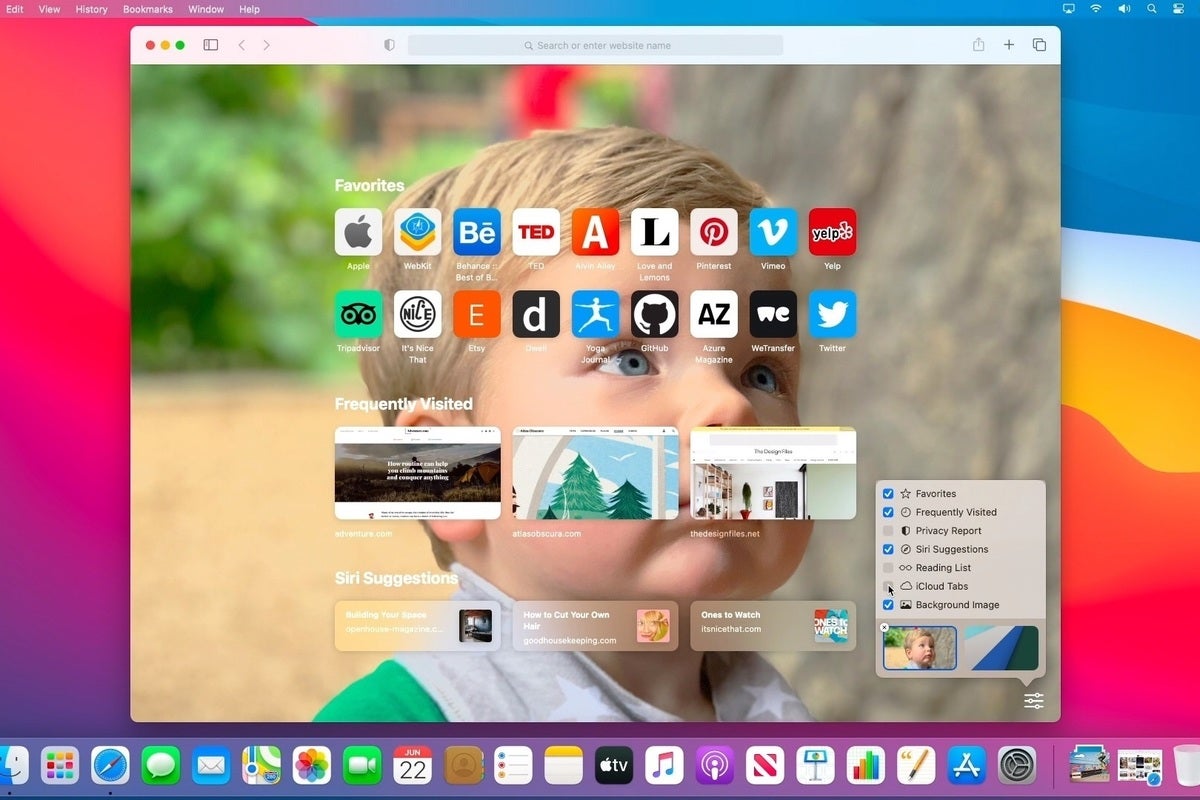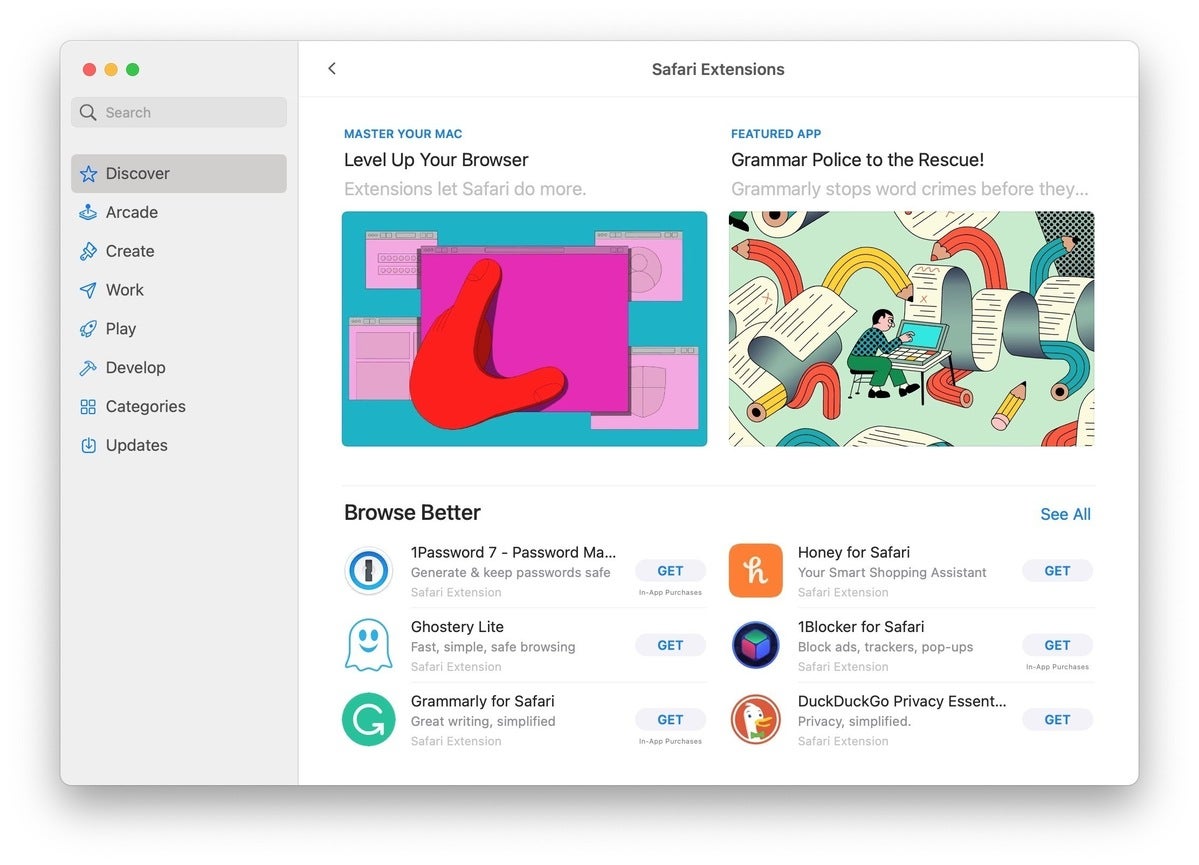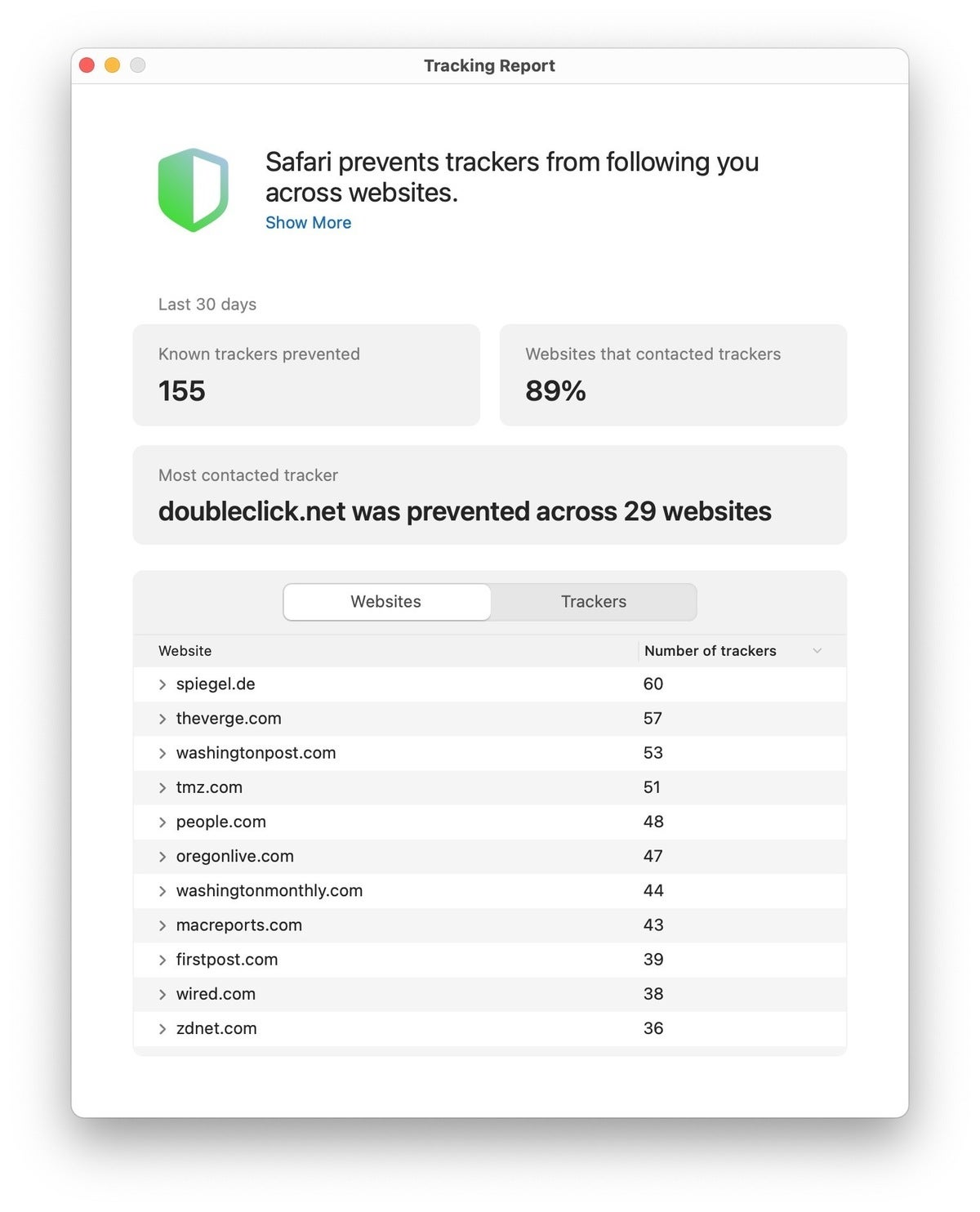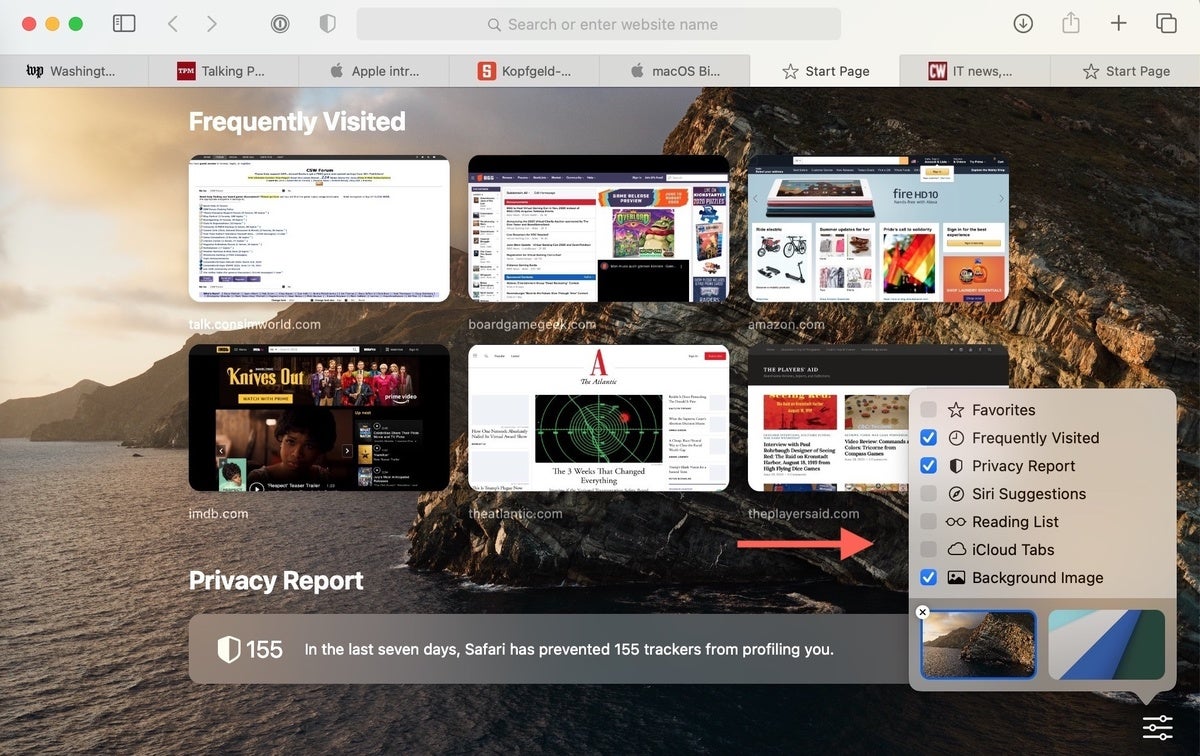Apple last week unveiled macOS 11, aka “Big Sur,” at its all-virtual Worldwide Developers Conference (WWDC). Like any other year, the Cupertino, Calif. company also gave coders a preview build of the operating system so they could get cracking.
And the new OS means, as usual, a new Safari browser for the desktop. Thank goodness for consistency, eh?
Unlike rivals, who crank out new browsers every few weeks – for instance, Mozilla refreshes Firefox every four – Apple rolls out a new Safari just once a year. Rather than spread out new features and functionality across a dozen or so updates, Apple packs the bulk of new into a single upgrade.
That deserves attention. We want to oblige.
Here, in Q&A format, is what you need to know now about the upcoming Safari. Computerworld will expand on this throughout the summer as Apple continues to pump out betas.
What’s Apple calling the new browser? Safari 14. Yes, exciting. Jump back, Loretta.
Last year’s Safari – the one packaged with Catalina, macOS 10.15 – was v.13 and unless the sky falls in, 2021’s will debut as v.15.
Apple’s practice of upgrading Safari annually led to that low numeric; rivals like Google’s Chrome and Microsoft’s Edge are at 83, and Firefox is at 77.
How do I get Safari 14? Pay the Man – at least if you want it now.
A mere $99 gets you an Apple Developer’s account – no, you don’t need to really be a developer to register – and thus access to early-release builds, including macOS 11, aka “Big Sur,” which includes Safari 14. Download and install Big Sur, or upgrade an existing macOS to it, and you’re green.
At some point this month, Apple will kick off a public beta program for Big Sur, as it has in the past for previous operating systems. The public beta will be free, but will slightly trail the developer build in stability and reliability throughout the preview process.
To sign up for Apple’s beta program, head here.
When will Apple launch Safari 14? “This fall” is as specific as Apple got when it unveiled macOS 11. September is the most likely month, with October not far behind; of the last seven upgrades, four have been released in September, three in October.
I love tabs. There’s no such thing as too many tabs. What does Safari 14 have for me? Users can preview an open tab by hovering the cursor over that tab, which after a short delay displays a thumbnail image of the page under said tab.
Safari 14 now displays “favicons,” the small icons, often a site logo, which make open tabs more visually recognizable, by default. (Earlier versions required an option be set in Preferences > Tabs > Show website icons in tabs.)
Apple also said that 14 will display more tabs that earlier versions; when numerous tabs are open, a favicon-only look eliminates site-name text but still allows for recognition.
Hover the mouse pointer over a tab for a quick peek at the page. It’s a great way to orient yourself when tabs are thicker than fleas on a stray cat.
I’m tired of passwords. How about some help? Safari 14 on macOS will let users authenticate to a website using Apple’s Touch ID technology. (And if Apple ever adds Face ID to Macs, as it’s done Touch ID to the MacBook Pro and MacBook Air, probably that, too.)
Websites have to code for the functionality, which once a user authenticates the usual way – username, password – will ask if he or she wants to opt in to using Touch ID. Sites that require two-factor authentication, banks, say, can be accommodated; a press on the Touch ID key and that’s handled as well.
I’m not paying for a developer account but I’d like to see what Safari has for me now. What are my options? The Safari Technology Preview is what you’re looking for. This is a beta program separate from the macOS beta; it runs constantly, giving site developers a way to test changes throughout a version’s lifecycle.
The latest, Preview 109, includes “new Safari and WebKit features that will be present in Safari 14.”
The developer preview can be run side-by-side with the stable, release-format Safari in macOS Catalina. No developer account is required to download and use the preview.
Will Safari 14 support Flash? Nope.
This version of Safari will be the first to support Adobe Flash in any way, shape or form. Three years ago, Apple – along with rival browser makers – said it would drop Flash support by the end of 2020. (Adobe pegged that same timetable for halting updates and distribution of Flash Player.)
I heard Safari 14 will translate foreign languages, just like Chrome does. Is that right? Well, not like Chrome.
The browser will translate several languages – English, Spanish, Simplified Chinese, French, German, Russian and Brazilian Portuguese – but that’s a far cry from Google’s tally, which is more than 100. (Google Translate has been integrated into Chrome for a decade.)
If translation is possible, you’ll see an icon near the far right end of the address field. Click on that and available translations will show. Languages for translations to (not from) must be listed in the Preferences > Language & Region > General > Preferred Languages.
Apple currently labels this feature as beta.
Click on the icon near the right end of the address bar – just before the refresh symbol – to translate a page.
Will Safari 14 run Chrome add-ons? How about those for Firefox? Sort of. But not out of the box.
While Safari 14 will support a Web Extensions API, a cross-browser system for developing add-ons, Apple’s implementation is somewhat different from the APIs used by Chrome and Firefox (and others, like Edge, which are Chromium-based clones of Chrome); developers will have to run non-Safari extensions through a special converter to get them ready to place on the Mac App Store.
For its part, Mozilla, maker of Firefox, welcomed Safari jumping on the bandwagon. “We’re excited to see expanded support for this common set of browser extension APIs,” wrote Caitlin Neiman, add-ons community manager, in a June 23 post to the Mozilla Hacks site.
Where will you get add-ons for Safari 14? From the Mac App Store.
Earlier versions of the browser showed available add-ons after choosing Safari > Safari Extensions. That same menu selection now pops up the App Store, taking the user to the add-ons section.
Safari add-ons are now distributed through the Mac App Store.
Will support for the API mean a lot more add-ons for Safari? Theoretically, yes. Potentially, also yes.
Practically? Who knows?
Although Microsoft’s Edge can run Chrome extensions without any modification, that’s due to the two browsers’ identical code base. Firefox, for example, hasn’t greatly benefited from the Web Extensions standard. Whether Safari, with a paltry 4% global desktop browser share – and active on about 40% of all Macs – can attract enough interest to change its add-on count in any meaningful way is unknown. Even if it does, that may not translate into a larger slice of the Mac market. (Five years ago, for instance, Safari was the primary browser for 66% of Mac owners.)
What privacy tools has Apple added to Safari 14? Tops on Computerworld‘s list: a new privacy report that, well, reports data on trackers and the websites using them that the browser has, well, browsed.
The report can be called by selecting Safari > Privacy Report. A pop-up window shows stats from the past 30 days, broken out by ranked websites – top of the list used more trackers than the one at the bottom – and tracker origin, such as doubleclick.net (an ad network) and google-analytics.com (self-explanatory). Safari’s report will also keep count of the number of trackers it’s blocked (assuming, of course, that the Preferences > Privacy > Website tracking box marked “Prevent cross-site tracking” has remained checked).
All of this is an adjunct to Safari’s Intelligent Tracking Protection (ITP), which debuted in 2017 and has been upgraded several times since. If ITP is turned off, the privacy report will be worthless.
The same holds for an individual site’s privacy report, accessed by clicking the shield-style icon to the left of the address bar. The ensuing small pop-up simply displays the number of blocked trackers, a list of the trackers used by that website and finally, entry to the full report (by clicking the info icon).
Firefox users will see much here that seems familiar, as Mozilla’s browser has provided a tracking report since October 2019 and version 70, as part of its Enhanced Tracking Protection (ETP) feature.
Safari’s new privacy report summarizes stats and calls out the sites that harbored the most trackers.
What about hacked password notification? Other browsers have that. Safari 14 will too, Apple’s said.
“Added notifying users when one of their saved passwords in iCloud Keychain has shown up in a data breach,” the Cupertino, Calif. company noted in the browser’s release notes.
Details weren’t spelled out, but the feature will almost certainly resemble those found in Firefox and Chrome, both of which check stored passwords against a database of the contents of known breaches, then report back when a match is found, urging the user to change said password.
To use the new warning, users will have to enable iCloud Keychain. Instructions on doing that can be found in this Apple support doc.
Frankly, Safari’s new tab page is boring. Anything to brighten that up? Yes.
Several new customizing options in Safari 14 let users add background images to the new tab page (like Chrome does), toggle on or off elements from iCloud Tabs to a truncated privacy report, and shrink or expand the number of recently-visited sites that populate the page.
Safari’s options are very easy to enable or disable – more so than other browser’s new tab pages – since they’re just checkboxes.
Safari 14’s new tab page can be customized by turning on or off several elements using the checkboxes.








